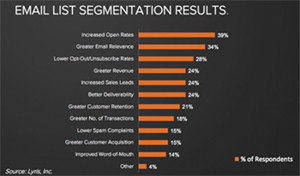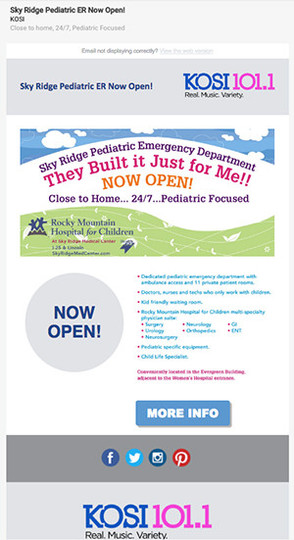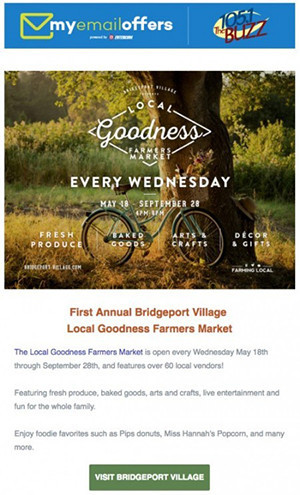3 easy ways to start segmenting your emails for better results
By now, just about everyone has begun to recognize the value of email and has implemented goals to grow their email database. And while you should definitely prioritize building a large email database, there is just as much (if not more) value in reaching a small, targeted audience.
WHAT IS EMAIL SEGMENTATION?
Email segmentation is the ability to leverage all the consumer data you collect to send specific emails to a group of people who will likely be engaged in the email's topic.
Most marketing campaigns are judged on click-through and open rates. Sending to a smaller list of users can lead to a much more efficient campaign because you're eliminating extraneous users who would likely not be interested in the message. When you send irrelevant information to your subscribers, it actually does more harm than good: by not taking action it lowers the results of that email campaign. Those users are also much more likely to unsubscribe – or worse, report you as spam.
Segmenting your list will:
- Increase your open rates
- Increase email subscriber retention
- Increase revenue
 |
HOW KOSI-FM FOUND THE VALUE OF EMAIL SEGMENTATION
Bonneville Denver radio station, KOSI-FM, was working with a local hospital that had just opened a new pediatric emergency room. When it comes to emergency services, location is key. KOSI-FM targeted the email, sending to specific ZIP codes within a 5-mile radius surrounding the medical center.
The station sent the email to a segmented list – merely 6 percent of its regular audience. But upon sending to this targeted group, the station saw a 5% increase in open rates compared to its entire email list. This proves that bigger lists don't equal better results.
 |
Deciding to send to a smaller audience opposed to your entire list may seem intimidating and risky at first, but companies that are taking the plunge into email segmentation are already seeing the tremendous value it produces.
HOW I CAN GET STARTED WITH EMAIL SEGMENTATION?
The quickest way to get started is segmenting by ZAG (zip code, age and gender). Most likely, your database already has a lot of this information about each of your consumers. But if you don't, start adding these questions onto your registration forms.
- Segment by ZIP Code
Segmenting by ZIP code is crucial to ensure you're providing deals and offers within the normal driving distance of your consumers. People won't drive more than 17 minutes to get to a restaurant, so why send them an email about one farther away? Below, an email announcing a local farmer's market is the ideal candidate to send to a select few ZIP codes.

- Segment by Age
Depending on the marketing campaign, you may prefer to limit your messages to a specific age range that would be the most responsive. Sending a message announcing enrollment for a new intense fitness class may not be suitable for the same audience getting retirement financial advice. Like the email below, young subscribers may not be as interested in an email advertising cosmetic surgery for tired eyes.

- Segment by Gender
It may sound silly to point it out, but men and women have different interests. Sending an email advertising maternity clothes, pedicures or a bikini-wax could be the ticket that leads to a male reader unsubscribing from future emails with your company. And while a wedding is a two-person affair, sending a "bride-to-be" email to the future husband may not be worth your time.

These three areas may be some of the simplest ways to get started with email segmentation, but you don't have to end there. The more consumer profile data you collect, the deeper you can dive into email segmentation and the more you can personalize your emails. As you continue sending more relevant messages, users will increasingly look for them and be excited to get these personalized messages. You'll build trust with your subscribers, and in turn, produce better results for advertisers.
HOW TO PRICE A TARGETED LIST
Wondering about how segmentation affects your pricing? Despite the fact that you're sending to a much smaller list, because these are proven to drive results for advertisers, you should actually charge more for the targeted email. I recommend looking at where you typically price an email campaign, then bump it up by 25 percent or 50 percent to start.
It's time to evaluate your email practices and improve on your email strategy. If you have questions, I'd love to help. Don't hesitate to reach out.
Matt Coen is the president and co-founder of Second Street, a leading provider of private-label online promotions platforms and partner success services for media companies based in St. Louis, Mo. He can be reached at (314) 880-4902 or matt@secondstreet.com.





